Are you fascinated by bizarre yet beautiful creatures? Then you might have already considered what it’s like to have a pet walking stick insect.
The question is, is a walking stick insect a good choice for a pet? Is it even legal to own one?
The quick answer is yes, walking stick insects can make good pets. To find out why, keep reading.
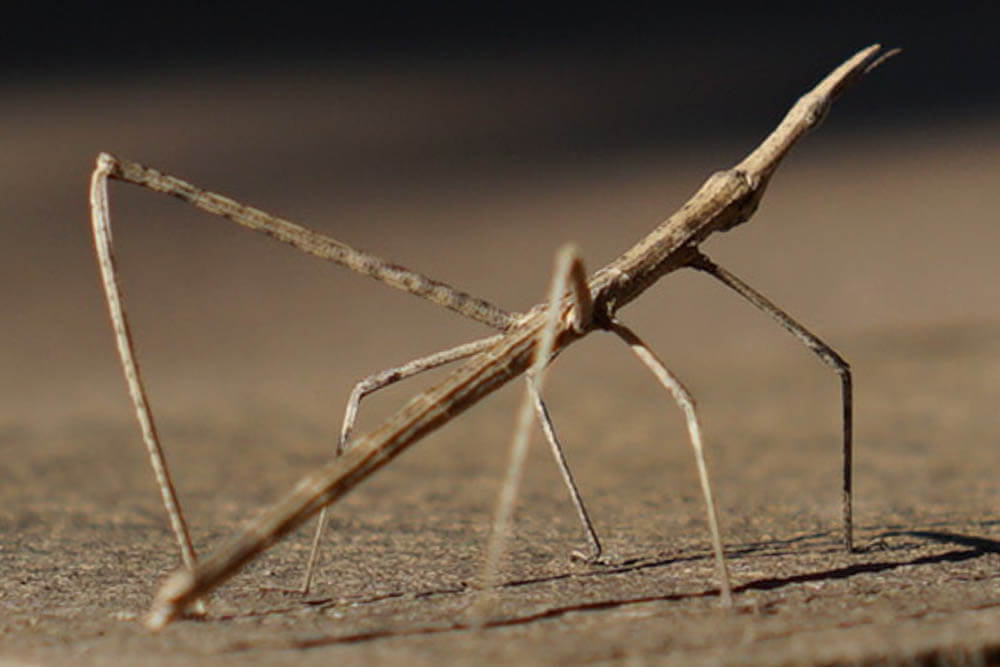
6 Reasons Why Walking Stick Insects Make Good Pets
Keeping a walking stick insect as a pet isn’t a common occurrence. However, there are people who keep these unusual creatures in captivity, specifically the Indian stick insect.
Below, we discuss the various reasons why these bugs may be the perfect pet for you.
1. They’re docile
Walking stick insects are extremely tame, gentle creatures. They won’t bite or sting you. They won’t make you itch. And they won’t inject a toxin into your bloodstream that’ll make you curl up in pain.
These creatures are so docile you can simply let them walk on your arm, hand, or even your face – and you can be rest assured you won’t come to any harm.
2. They’re low maintenance
Stick bugs are easy to care for as it doesn’t take much effort to keep them alive and content. You don’t need to walk them, play with them, give them toys, or cuddle with them; they can be happy and healthy even when left alone for several days.
They won’t pee or poop everywhere. They won’t chew your shoes or your furniture. Training is utterly unnecessary to keep them well-behaved.
You also won’t have to spend a lot of money to feed them. These creatures can eat leaves, typically oak, hawthorn, oak, blackberry, privet, and ivy leaves. Organic vegetables such as lettuce should also do; just make sure you wash them under a faucet and that they don’t contain any insecticides or pesticides.
In addition, these creatures don’t need to be bathed or groomed. Their waste is dry and easy to clean up.
If you’re too busy for an interactive pet such as a dog or a cat, these insects may be right for you.
3. They’re quiet
Walking stick insects don’t bark, howl, screech, squeal, or squawk. They don’t run around the house toppling things over or climb shelves to knock things off them. With these unusual pets, you won’t have to worry about annoying the neighbors or getting woken up in the middle of the night.
Walking stick insects do make noise, but they do so rarely, and they aren’t loud enough to cause a disturbance.
4. They don’t have many health problems
There are few things more upsetting than when a beloved pet gets sick.
Thankfully, there aren’t many serious health conditions that can impact walking stick insects. You won’t have to worry about them getting heart disease, diabetes, arthritis, respiratory problems, neurological problem, or growing obese.
One thing you do have to make sure of is giving them a habitat that isn’t too small, as a lack of space can give them severe deformations or kill them. Also, make sure they’re never exposed to fungal infections or pesticides.
5. They can live alone
Pets such as dogs, cats, birds, and mice get lonely when they’re alone – and loneliness can adversely affect their health to such an extent that they start resorting to destructive or dangerous behaviors. Therefore, it’s usually a good idea, for example, to get more than two dogs so that they can keep each other company whenever you aren’t around.
In contrast, stick insects don’t need company. An individual will be perfectly happy living alone, which is one of the reasons why they’re so affordable and easy to care for.
6. They’re inexpensive
Taking care of a stick bug is fairly cheap. A mature specimen costs between $20 and $50 depending on the species. The cheaper alternative is to buy eggs, which generally cost around $5 to $20 per 10 eggs.
You may have some trouble finding a physical or online store selling these insects due to their rarity, however. Your best bet is to try asking reptile supply vendors.
The most expensive part of owning a walking stick insect is buying a terrarium to house it in, which can cost between $100 and $250.
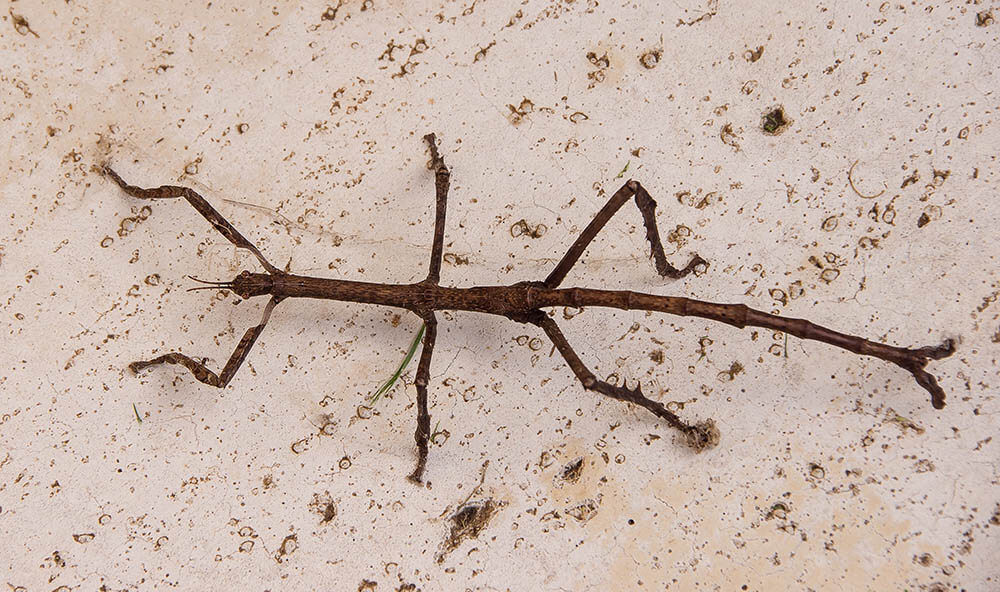
5 Important Reminders About Taking Care of a Walking Stick Insect
If you want to take care of a walking stick insect, keep the following in mind:
1. They’re delicate
Walking stick insects are exceptionally fragile, so rough handling can end up hurting them. If you need to pick one up, hold it by the body and not its legs, as it’s extremely easy to accidentally tear off those limbs.
In fact, it’s a good idea to leave your stick insect alone as much as possible, and handle it only when completely necessary, such as when it’s time to clean its enclosure. Not to mention that, since these creatures are nocturnal, you’ll only be bothering your pet if you interact with it during the day.
Ultimately, walking stick insects are docile creatures that you’re better off watching instead of handling.
2. They shed
Walking stick insects are similar to praying mantises in that they also molt a number of times prior to reaching adulthood, which should take around 5 months.
During molting, the insect is highly susceptible to harm. Make sure to leave your pet alone; never touch or handle it until its new exoskeleton has hardened following molting.
3. Their females can reproduce without a mate
Female stick bugs don’t necessarily need to mate with males to produce offspring; they can lay unfertilized eggs that hatch and develop into new insects.
These eggs are round and smooth and can be gathered and placed in a warm tub of vermiculite or sand. Gestation can take from two to 14 months. Once hatched, you should put the immature bugs in small rearing containers to separate them from the adults.
If you don’t want your walking stick insects to multiply, destroy the eggs before they hatch by boiling, crushing, or burning them.
4. They need special housing
Walking stick insects require a special habitat to stay safe and happy.
In general, an enclosure should be three times as tall as an insect’s length. A cheap option would be a plastic container, but it’s better to get a terrarium as its transparent walls will let you observe your pet at your leisure.
High-quality terrariums have good ventilation and ample space not only for your insects but also plants for their consumption. A mesh lid is also important.
5. They need a warm environment
Stick bugs should be kept in a warm environment, preferably with temperatures between 70 and 75 degrees Fahrenheit. However, any temperature above 65 degrees Fahrenheit will do, as well.
Keep your pets’ terrarium in a warm room. You should also provide them with additional heat by using heating pads designed for reptile enclosures. Alternatively, you can place a lamp close to their terrarium. If you’re using a heating lamp, make sure to use blue or red bulbs at night.
If you put a potted plant inside your pet’s terrarium, you can use a fluorescent fixture, as this is optimal for plant growth.
Keep the habitat properly ventilated to avoid the growth of mold or fungi. Fungi can be deadly to stick bugs.
To make cleaning the terrarium easier, cover its floor with paper. However, it’s better to use a substrate of vermiculite or peat moss as this can help keep the habitat humid. This is a bit tougher to clean up, though.
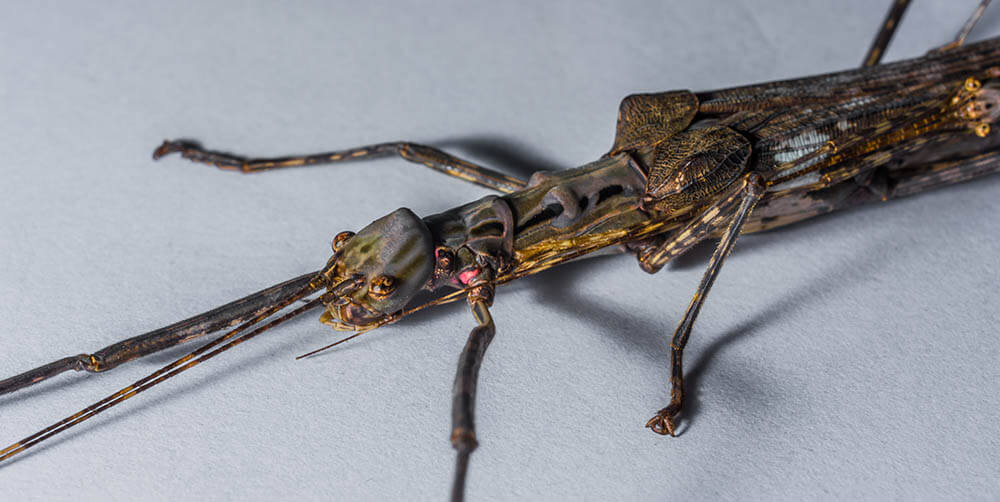
Is It Legal or Ethical to Own a Walking Stick Insect?
It’s illegal to own any stick insect that isn’t native to the U.S. Some states strictly prohibit owning such a pet, while others will require you to obtain a U.S. Department of Agriculture permit. The best way to find out if you can keep a pet walking stick insect is to examine your local and state laws.
In North America, the Indian walking stick insect is considered a pest, as it tends to eat plant matter rapidly and reproduce quite quickly. For this reason, you should never release such a creature into the wild, as it can cause devastation to the ecosystem. To help prevent this kind of disaster, you should destroy their eggs via boiling, crushing, or burning.
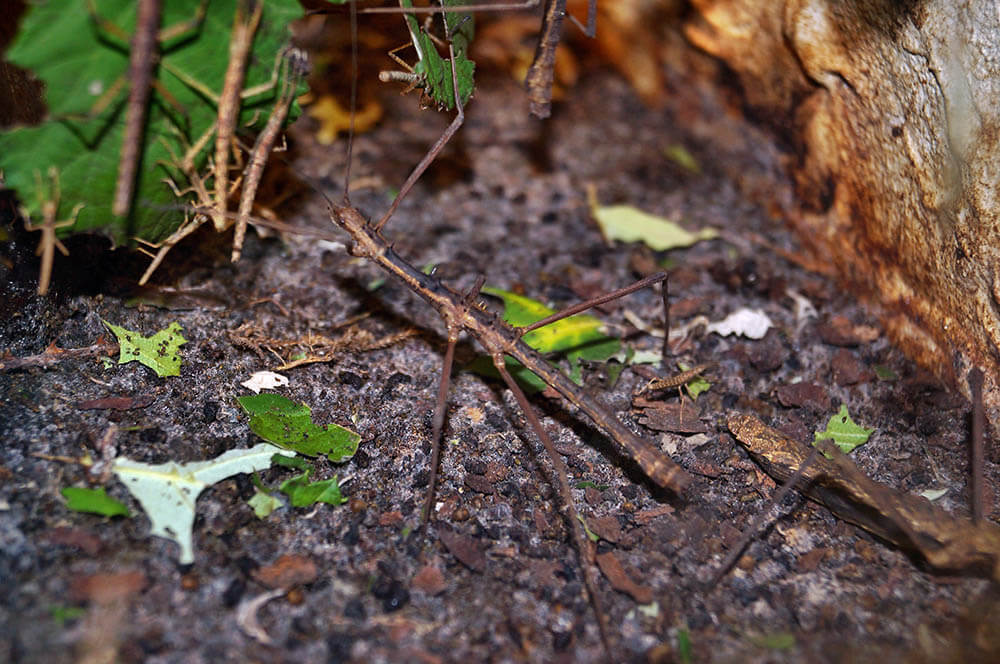
Other Walking Stick Insect Facts
If you’d like to know more about these fascinating animals, check out our list of walking stick insect facts below!
1. They can get incredibly big
While it’s typical for walking stick insects to be between one and 12 inches in length, some species can grow almost as long as two feet.
2. Their females are larger than males
Thanks to sexual dimorphism, female walking stick insects are generally larger than males. A tiny male hanging on to the female’s back may be mistaken for a baby.
3. They use camouflage
Walking stick insects use camouflage to avoid being eaten by predators. Not only do they look like sticks but they also sway to and fro to appear as if they’re a part of a plant that’s being disturbed by the wind.
4. They use various techniques to ward off predators
In addition to using camouflage, some walking stick insects employ other techniques to deter predators. For example, there are species that exude a stinky substance or spray a chemical capable of blinding predators. Others have wings and bright colors, which they use to startle, frighten, and/or confuse predators.
5. They can regenerate lost limbs
Walking stick insects can detach their limbs to distract predators, thereby allowing them to make a hasty escape. Thankfully, they can grow those limbs back.
6. They can play dead
When threatened by a predator such as a mouse or bird, a walking stick insect will fall from its perch and drop to the ground, where it’ll stay immobile as if dead. This can discourage the predator from eating it.
7. They have different feeding schedules depending on age
Adult walking stick insects generally feed on plants at night, while immature ones are usually more active during the day.
8. They have long lives
Walking stick insects are longer lived than most insects, with adults enjoying a two-year lifespan.
9. They can change color
Like a chameleon, some walking stick insects can change color depending on the appearance of their immediate surroundings.
10. Their eggs resemble seeds
Walking stick insect seeds look like seeds, which can trick predators into thinking they aren’t food.
11. Mothers used various techniques to protect their eggs
In general, walking stick insect mothers randomly drop their eggs to the forest floor. By scattering them this way, there’s a bigger chance they won’t all be discovered by predators. However, some mothers instead hide their eggs by sticking them to bark or leaves or putting them in the soil.
12. Nymphs eat their castoff skin
Once nymphs, or immature walking stick insects, have molted, they consume their castoff skin to hide evidence of their existence from predators. This skin also provides them with the protein they need to grow.
Should You Own a Pet Walking Stick Insect?
This depends on you! If you want a unique and fascinating animal that’s extremely easy to care for, then a walking stick insect may be the ideal pet for you.
However, remember that stick bugs are among the least interactive pets you can own. If you want an animal companion that’ll play and snuggle with you, do tricks, give you lots of love, join you when you’re exercising, or defend you from the bad guys, you’re better off getting another pet.
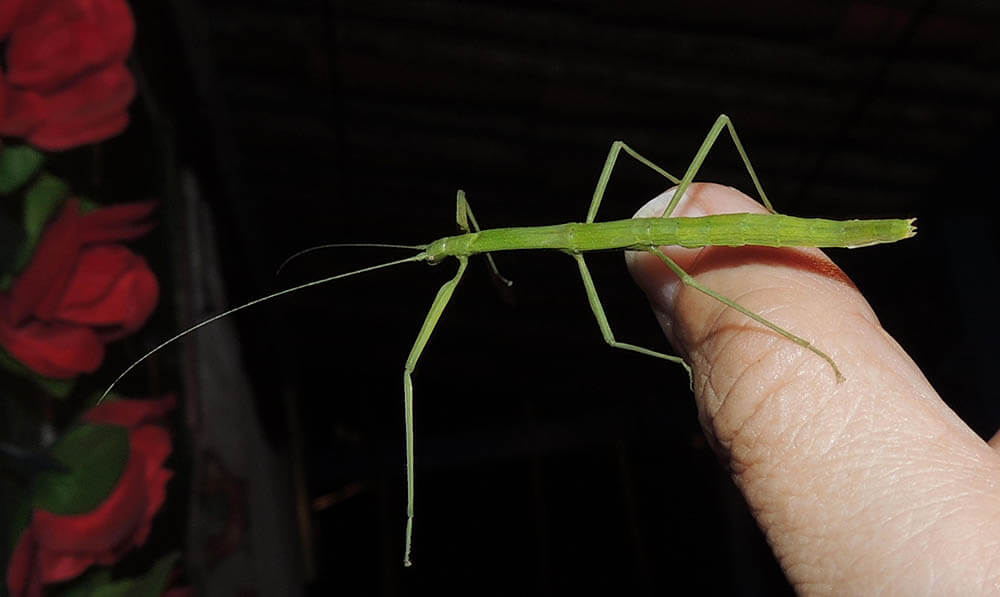
Conclusion
Walking stick insects make great pets if you’re the type of person who can’t afford to spend too much time or exert additional effort caring for an animal. These bugs are inexpensive, low-maintenance creatures that can be happy living alone in a terrarium – and you can be sure they won’t be a bother to anyone.
Remember, however, that some areas prohibit the keeping of stick bugs as pets. If you’re 100% sure about owning one, make sure you do some homework about whether or not it’s legal to own them in your state.
